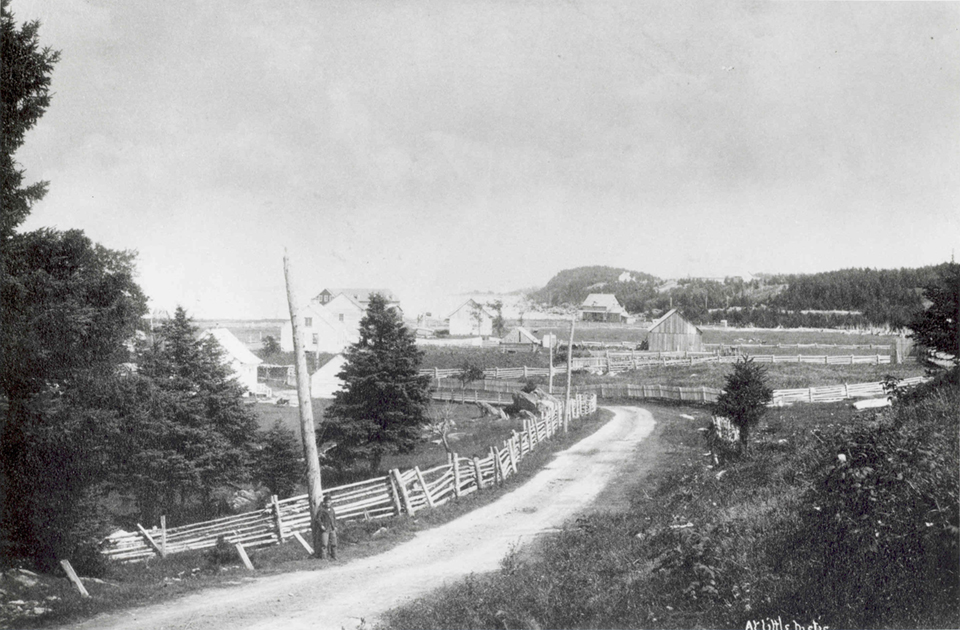Old Roads – The Fabric of Roads and Roadways

Photograph
Turriff’s Bay, Little Metis, About 1870
Alexander Henderson
McCord Stewart Museum
Metis has a rich tapestry of roads, old and new. The first roads followed the beach, just high enough from the shoreline to avoid debris left by the sea. But when travellers arrived at the Metis River, they found a nearly impossible challenge. They either had to ford the river or wait for a local with a boat to ferry them across.
One of Seigneur John Macnider’s special passions was for road building. His investment on roads on his seigneurie helped convince the government to improve the transportation network throughout the region. This eventually led to the construction of the Kempt Road that connected the St. Lawrence to the Baie-des-Chaleurs. Its starting point was the mouth of the Metis River.
The need to build roads was what led to the creation of municipalities. Only local government could muster the support and impose the taxes required to finance roads. It still took decades of debate. The bridge over the Metis River was not built until the 1850s, the result of drawn-out negotiations between two municipalities who were not convinced of the value of such a costly infrastructure or who should pay for it.
Nearly a century later, it took petitions to convince the provincial government to build a road bypass around Metis. It was finally completed in 1960, but only after the Ville de Matane exerted political pressure. The steep hills and tortuous curves in Les Boules and Metis endangered both pedestrians and drivers. The daily diet of speeding tickets doled out to truckers was a costly annoyance.
The road bypass is one of the reasons that Metis has preserved its unique character. Beach Road is today flanked by historic stone walls and high hedges only because the heavy traffic whistles by on Route 132.

